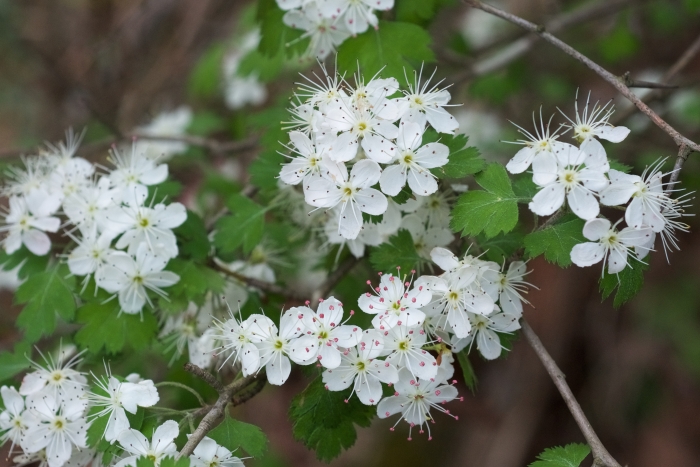Parsley Hawthorn
(Crataegus marshallii)
Parsley Hawthorn (Crataegus marshallii)
/
/

Eric Hunt
CC BY-SA 4.0


















































Estimated Native Range
Summary
Parsley Hawthorn is valued for its unique foliage, spring flowers, and fall fruit, making it a desirable addition to native plant gardens, wildlife gardens, and as a specimen in residential landscapes. It is relatively low-maintenance, requiring minimal pruning. This hawthorn prefers full sun to part shade and adapts to a range of soil types, though it thrives in moist, well-drained soils. While generally disease-resistant, it can be susceptible to rust diseases and fire blight. Gardeners should be aware of its thorny branches when planting near pedestrian areas.CC BY-SA 4.0
Plant Description
- Plant Type: Tree, Shrub
- Height: 20-25 feet
- Width: 10-15 feet
- Growth Rate: Moderate
- Flower Color: White
- Flowering Season: Spring
- Leaf Retention: Deciduous
Growth Requirements
- Sun: Full Sun, Part Shade
- Water: Medium
- Drainage: Medium, Slow
Common Uses
Bee Garden, Bird Garden, Butterfly Garden, Drought Tolerant, Edible*Disclaimer: Easyscape's listed plant edibility is for informational use. Always verify the safety and proper identification of any plant before consumption., Fire Resistant, Hedges, Hummingbird Garden, Low Maintenance, Salt Tolerant, Showy Flowers
Natural Habitat
Understory of mixed hardwood forests, particularly along stream banks and swampy areas in the Southeastern United States
Other Names
Common Names: Parsley-Hawthorn
Scientific Names: , Crataegus marshallii, Mespilus apiifolia, Crataegus oxyacantha var. apiifolia, Crataegus apiifolia var. minor, Mespilus monogyna var. apiifolia, Mespilus oxyacantha var. americana,
GBIF Accepted Name: Crataegus marshallii Eggl.